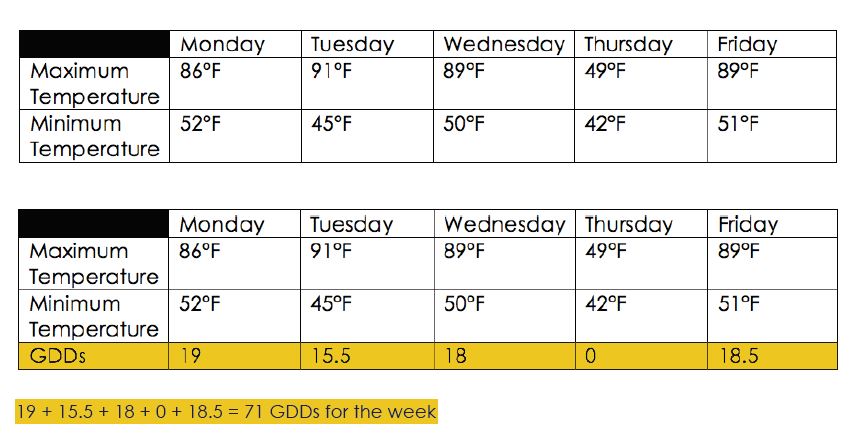Explore Corn
Growing Degree Days
Grade Levels: Middle School,High School
Driving through Kansas, it is difficult to miss fields of corn in the spring and summer. In an average year, more than 500 million bushels of corn are harvested in Kansas. That’s a lot! With numbers like that, one might believe it is easy to grow corn in Kansas. It goes well beyond just planting and watering though. There’s a science behind knowing when to plant corn, when to expect different stages of growth, and when to harvest – it’s called growing degree days (GDD).
In the spring, there are many important factors to consider when a farmer is thinking about planting corn. Are we done with freezes for the season? Is there moisture on the way? How much light is hitting my plants? While these are in the forefront of a farmer’s mind, another major factor is going to be temperature. We are not only talking air temperature, but also ground temperature.
According to the Kansas State University Department of Agronomy, if a farmer plants corn from when the ground temperature is between 50°F and 55°F, it can take 18 to 21 days to see emergence. If the farmer plants corn when the ground temperature is between 60°F and 65°F, it might only take 8 to 10 days to see emergence. What a difference! Iowa State University’s Department of Agronomy adds that corn will not grow below 50°F. Corn grows best in conditions between 50°F and 86°F. Between 86°F and 93°F, corn continues to grow, but the increase in temperature does not give additional benefit to the plant. Above 93°F, there can be a negative impact on the growth of corn. Above 110°F, true heat stress can occur on the plant. In general, warmer weather helps corn grow and cooler weather slows growth. It is recommended that students complete the Kansas Corn: Explore Corn lab prior to completing this lesson. This will help the students understand the growth stages of corn as they compete this lab.
About Kansas Corn STEM
Investing in Kansas teachers and students is a priority for the Kansas Corn Commission. We are committed to providing materials and training to support STEM education while fostering an understanding of how corn farming and agriculture fit into our daily lives. Professional development workshops are offered to teachers seeking to expand their knowledge and inquiry-based teaching skills. Workshop participants receive free lab supplies needed for the lessons.
Workshop InfoThis lesson is the work product of the Kansas Corn Commission. Our lessons are written in collaboration with Kansas teachers for use in the classroom. Teachers may copy and share this curriculum. Use of this product for commercial or promotional use is prohibited without express permission of Kansas Corn.
Newsletter Sign Up
Each quarter we release a newsletter written by teachers for teachers. This is an easy way to keep up with what is happening at Kansas Corn STEM.
Subscribe Today!






